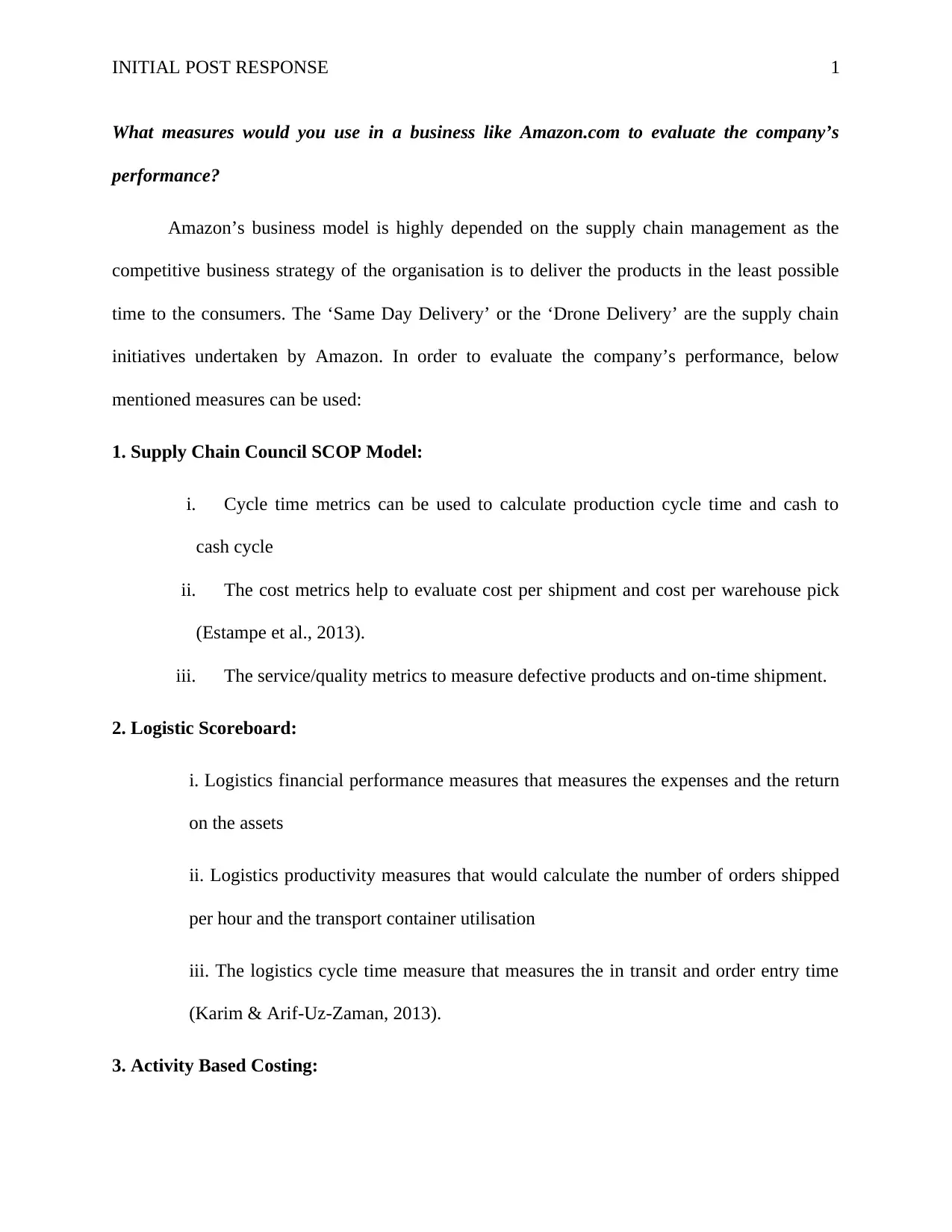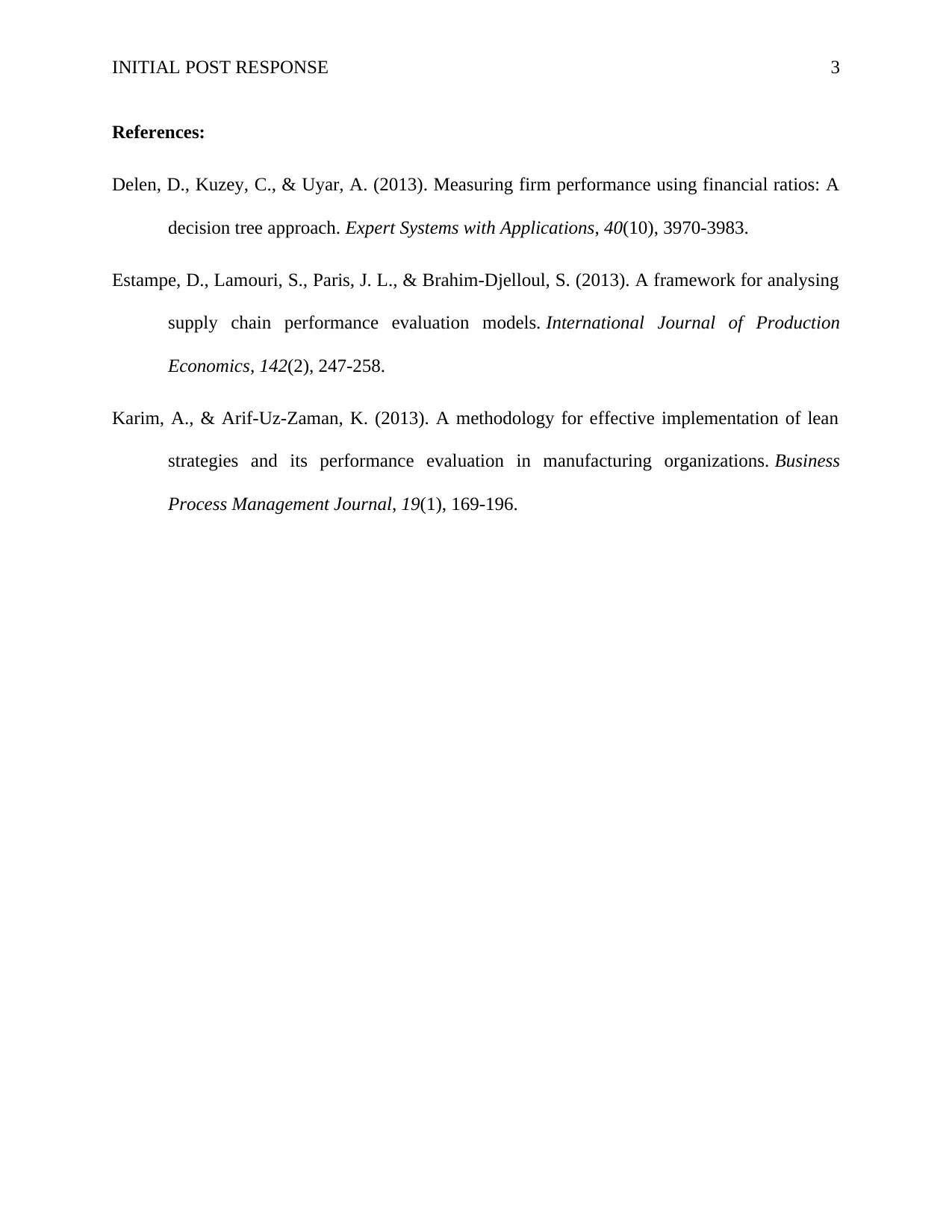Performance Evaluation of Amazon: A Case Study and Analysis
VerifiedAdded on 2020/03/04
|4
|485
|82
Report
AI Summary
This report presents a case study on Amazon's performance evaluation. It explores various methods to assess Amazon's success, focusing on supply chain management, logistics, and financial metrics. The report discusses the application of the Supply Chain Council (SCC) model, logistic scoreboards, activity-based costing, and economic value added to evaluate Amazon's operational efficiency and financial performance. The analysis includes a review of key performance indicators (KPIs) such as cycle time, cost per shipment, and on-time delivery, providing a comprehensive overview of how Amazon's performance can be measured and improved. The report also references relevant academic sources to support its findings and recommendations.
1 out of 4







![[object Object]](/_next/static/media/star-bottom.7253800d.svg)